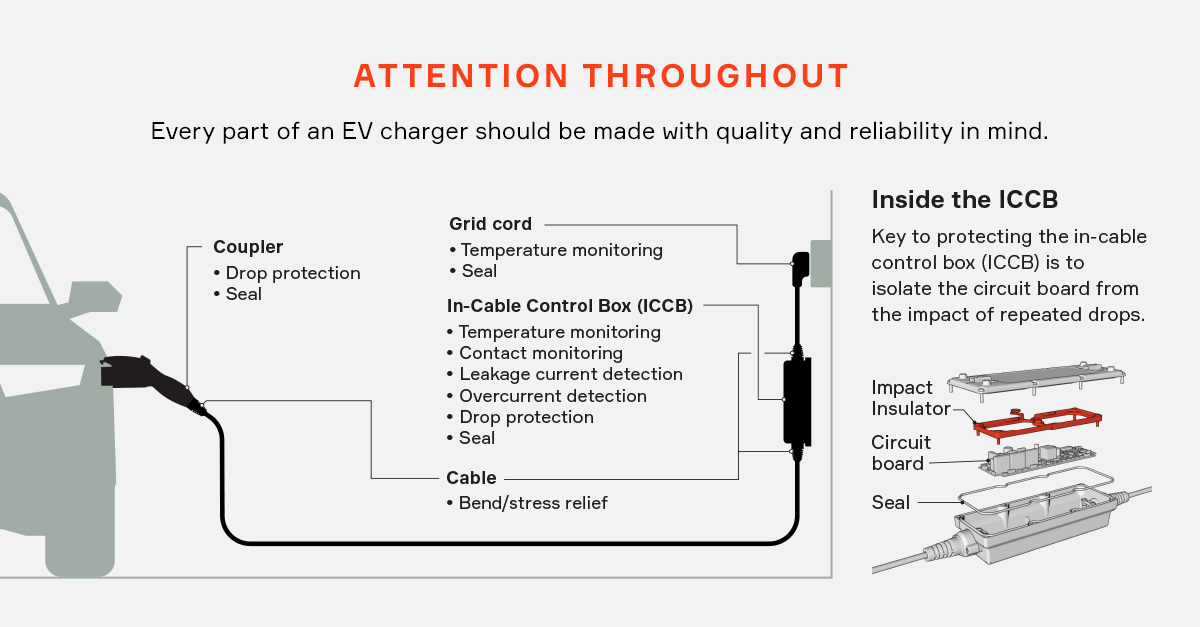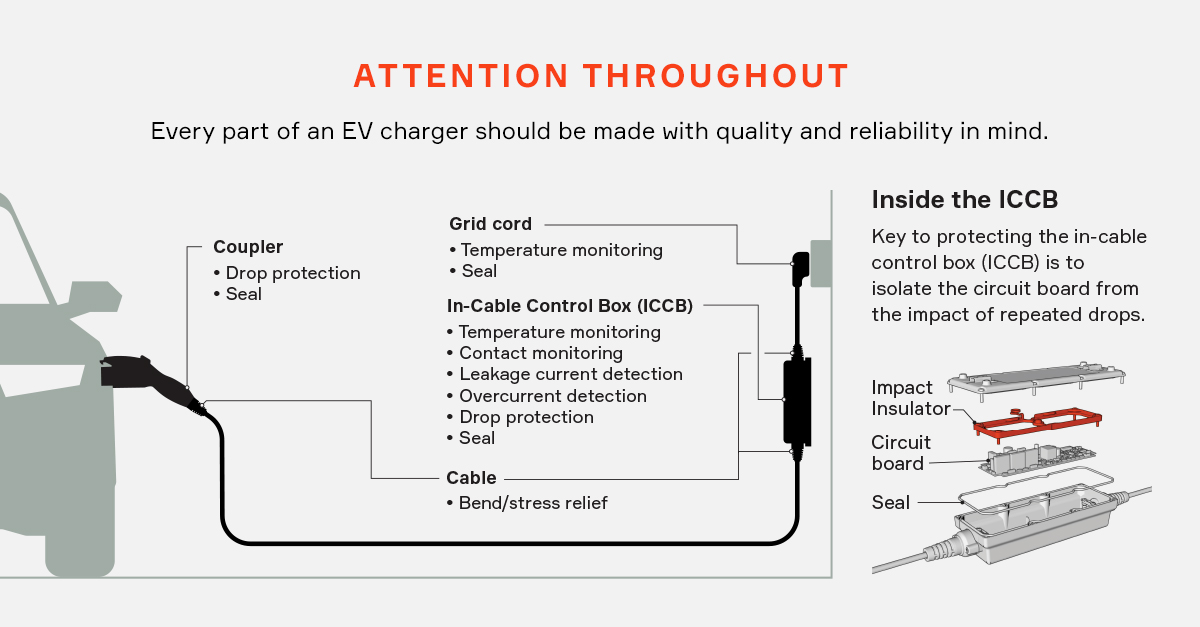Quality and Reliability Matter When It Comes to EV Chargers
The infrastructure for electricity is well established, with the modern electrical grid providing safe and reliable energy to homes and businesses around the world. As consumers move to electric vehicles (EVs), however, they are drawing new levels of power from the electrical grid to charge them.
At the intersection of the EV and the grid — bridging the new world and the old — are EV chargers: the electronic control box, vehicle coupler connector, cable and wall plug that together make EV charging happen. Not only does the equipment need to be tough and reliable; it also needs to be designed to safeguard against any potential hazards that could occur when interfacing with an electrical infrastructure that was never built with EVs in mind.
Higher-quality EV chargers provide superior heat management, cable robustness, drop protection and environmental protection. They protect consumers’ homes from damage, they weather the elements and they last longer than lower-rated chargers. As EV consumers demand the speed and convenience associated with refueling gas-powered vehicles, a key part of the equation will be the last few meters of the grid: an EV charger that is built to withstand all kinds of conditions and power loads.

EV charger design considerations
Creating a reliable charger involves both electrical and mechanical considerations. On the electrical side, the charger’s electronic control box is there to safely watch and supply power to the vehicle, ensuring that the consumer is able to charge it as expected. The electronics must have redundant features built into their design so a component failure does not lead to a safety issue. Thermal management is crucial to protect against overheating – at both the connection to the grid and within the EV charger itself – and to optimize the charging cycle.
On the mechanical side, years of field experience have taught us that consumer use presents an array of challenges. Not only will consumers drop EV chargers repeatedly over time, but they will also wrap the cables, drive over them and leave them out in the rain. Lawn mowers will occasionally run over them, and dogs may chew on them.
Designs must account for these mechanical challenges in every part of the charger. They should include robust cable construction that couples stress reducers with proper strain relief to prevent copper strands from breaking and cable insulation from rupturing. If there is an in-cable control box (ICCB), it must be automotive-grade and properly sealed to protect it from the elements. And the coupler — the part that consumers handle the most, as they plug it into their vehicles — has to be able to withstand repeated drops and misalignment when being plugged in.
These considerations are just the start. Get full details about what to look for in an EV charger in our white paper.

